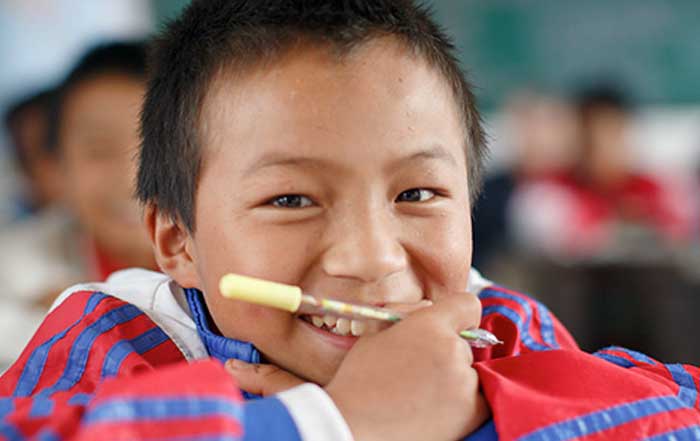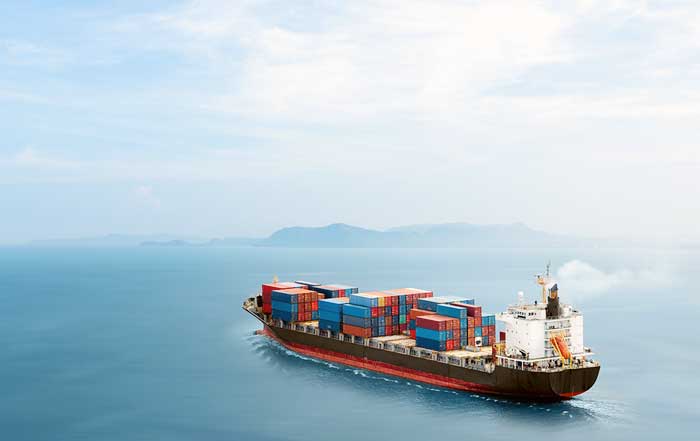Global unity is no longer a philosophical ideal but an economic, environmental, and ethical necessity. The complexities of climate change, migration, digital transformation, and geopolitical realignment have compelled nations and individuals alike to find common ground. From multilateral trade frameworks to collaborative research in health and technology, humanity’s progress increasingly depends on cooperation that transcends borders, cultures, and ideologies. As global citizens engage in more cross-border dialogue and action, the initiatives fostering this new era of interconnectedness become the true pillars of civilization’s resilience.
Learn more about global cooperation in sustainable innovation.
Building Bridges Through Global Institutions
The foundation of unity often rests upon international organizations that serve as platforms for dialogue, policy coordination, and humanitarian assistance. Entities such as the United Nations, World Health Organization, and World Trade Organization have evolved in their missions to reflect the challenges of the 21st century. In 2025, global governance is being reshaped by calls for inclusivity, equity, and digital transparency. The UN Sustainable Development Goals (SDGs) remain a universal framework guiding both public and private sectors toward eradicating poverty, advancing gender equality, and fostering climate action.
However, beyond these established institutions, newer coalitions have emerged. The Global Partnership for Education, C40 Cities Climate Leadership Group, and World Economic Forum’s Centre for the Fourth Industrial Revolution exemplify a broader transformation—where the focus has shifted from governmental negotiations to cross-sector collaboration. Nations and corporations now view collective problem-solving not as an option, but as a responsibility tied to their global legitimacy. This shared sense of mission redefines the modern concept of sovereignty into one of shared stewardship.
Discover more on how global cooperation shapes the future of societies.
The Digital Era of Collaboration and Shared Knowledge
The spread of digital technology has dramatically lowered the barriers to international collaboration. Cloud computing, artificial intelligence, and blockchain technologies have redefined how institutions share knowledge, secure transactions, and manage global projects. The rise of open data ecosystems has empowered research institutions across continents to jointly tackle global issues—from tracking pandemics to monitoring carbon emissions. Collaborative efforts such as Google DeepMind’s AlphaFold project, which unlocked the mysteries of protein folding for global medical use, or IBM’s Quantum Network, uniting researchers worldwide to advance quantum computing, exemplify how technology drives unity through shared scientific progress.
The convergence of digital inclusion and innovation has also led to the rise of digital diplomacy, where virtual summits and real-time policy dialogues transcend physical borders. Organizations like UNESCO and The World Bank are promoting equitable access to digital infrastructure, emphasizing that true connectivity must be inclusive. As the global digital divide narrows, the result is a more informed, empathetic, and collaborative world.
Read about the role of technology in global development on WorldsDoor Technology.
Health Diplomacy and the Spirit of Collective Care
Few aspects of unity resonate as deeply as global health. The COVID-19 pandemic redefined the meaning of interdependence, highlighting both the fragility of healthcare systems and the strength found in cooperation. In 2025, the legacy of that crisis continues to shape new frameworks of health diplomacy. The World Health Organization (WHO) and GAVI, the Vaccine Alliance have spearheaded initiatives to ensure equitable vaccine distribution and global preparedness for future outbreaks. At the same time, regional collaborations such as the African CDC Partnership and the European Health Union illustrate how coordinated public health efforts create resilience that extends beyond borders.
Health is increasingly seen as a form of diplomacy, binding nations through shared goals rather than dividing them through competition. Medical innovations such as telemedicine platforms, AI-driven diagnostics, and open genomic data platforms are democratizing access to care. Meanwhile, initiatives like One Health, which integrates environmental and animal health into human health strategies, represent a holistic model for the future. This movement recognizes that global well-being is inseparable from the health of ecosystems and the planet itself.
Explore more insights on global health and environmental sustainability.
The Cultural Dimension of Unity
Culture serves as the silent architect of global understanding. Across continents, artists, educators, and creators are working to bridge divides through shared stories, music, and artistic expression. Projects like UNESCO’s Creative Cities Network, the Venice Biennale, and Documenta in Kassel have transformed cultural festivals into spaces for international dialogue. Digital streaming platforms have also accelerated cultural exchange, allowing millions to experience films, music, and art from regions they may never visit physically.
Cultural diplomacy has become an essential tool for peacebuilding, with countries investing in international cultural institutes and exchange programs. The British Council, Goethe-Institut, and Japan Foundation continue to shape perceptions across borders, nurturing empathy through shared learning. In 2025, the cultural narrative of unity is not about homogenization but about celebrating diversity within shared humanity. These initiatives reveal that while languages and traditions differ, creativity remains a universal bridge.
Learn how culture drives understanding on WorldsDoor Culture.
Education Without Borders
Education is the cornerstone of unity and empowerment. The global education landscape has evolved from rigid national systems to an interconnected ecosystem driven by technology and shared values. Online platforms like Coursera, edX, and Khan Academy have opened access to quality education regardless of geography or income level. UNICEF, Global Partnership for Education, and OECD continue to emphasize the transformative power of education in fostering tolerance and sustainable growth.
In 2025, hybrid and immersive learning models have emerged as catalysts for international collaboration. Virtual classrooms enable students from Tokyo to debate sustainability with peers in Nairobi or New York, creating a generation of globally literate citizens. Moreover, international initiatives such as the UNESCO Futures of Education report encourage reimagining learning systems that prioritize empathy, critical thinking, and planetary responsibility over mere economic competitiveness. Education is no longer confined to textbooks—it is a living dialogue among global minds.
Learn about humanity’s progress through education on WorldsDoor Education.
Economic Cooperation and the Future of Global Trade
Economic interdependence has long been one of the most powerful drivers of global unity. In 2025, the international trade landscape continues to evolve, shaped by renewed regional partnerships and the rise of sustainable commerce. Agreements such as the Comprehensive and Progressive Agreement for Trans-Pacific Partnership (CPTPP), African Continental Free Trade Area (AfCFTA), and the European Union’s Green Deal reflect how economies are finding common ground in ethical, transparent, and environmentally conscious trade. The move away from protectionism toward inclusive economic globalization illustrates a gradual but promising shift in global relations.
Modern trade is no longer defined solely by profit margins or exports but by the shared mission to balance prosperity with responsibility. World Trade Organization (WTO) reforms have begun to integrate climate considerations into trade negotiations, linking carbon accountability to global supply chains. Initiatives like Fairtrade International and UN Global Compact have also gained unprecedented traction, as consumers and investors increasingly demand ethical sourcing and transparency. By tying commerce to human and environmental welfare, the global economy is transforming into a collaborative ecosystem where unity and mutual growth define long-term success.
Learn more about sustainable economic innovation and trade.
Global Unity Pillars 2025
Explore the key areas driving international cooperation
Environmental Stewardship as a Unifying Force
The climate emergency has emerged as one of the greatest collective challenges of our time—and also one of the most powerful incentives for global unity. Extreme weather events, rising sea levels, and biodiversity loss have made clear that no nation can insulate itself from the planet’s distress. In response, cross-border environmental alliances have proliferated. The Paris Agreement remains the central framework, but new coalitions—such as The High Ambition Coalition for Nature and People, Global Methane Pledge, and The Ocean Panel—are leading cooperative environmental governance into an era of unprecedented collaboration.
Technology plays a pivotal role in enabling this shared stewardship. Innovations in satellite monitoring, carbon capture, and renewable energy are being shared across continents, accelerating the global transition toward sustainability. Countries are forming “green corridors” for clean trade, where renewable energy, electric mobility, and circular economy principles dominate production and logistics. Corporations like Microsoft, Tesla, and Siemens Energy are also setting benchmarks for carbon neutrality and public transparency in environmental accountability. Humanity’s realization that climate action unites rather than divides has sparked a moral and economic transformation.
Learn about the global green transition on WorldsDoor Environment.
Humanitarian Cooperation and Global Resilience
Beyond economics and policy, unity is most profoundly expressed in the shared compassion that defines humanitarian response. From disaster relief to refugee assistance, international organizations such as The Red Cross, World Food Programme, and Médecins Sans Frontières (Doctors Without Borders) embody the world’s capacity to act with empathy across boundaries. In 2025, these efforts are increasingly coordinated through digital platforms that enable faster crisis response and more transparent resource distribution.
The Global Humanitarian Response Plan, managed through cooperation between the United Nations Office for the Coordination of Humanitarian Affairs (OCHA) and regional partners, has enhanced cross-border assistance during conflicts and natural disasters. Meanwhile, blockchain-based identity systems are improving aid efficiency by ensuring that resources reach those most in need. These innovations demonstrate how technology and ethics can merge to restore hope and dignity. The collective response to humanitarian crises today reflects a new kind of unity—one driven by empathy, enabled by data, and sustained by shared moral conviction.
Explore how unity shapes global welfare on WorldsDoor Ethics.
Travel, Exchange, and the Rebirth of Global Connectivity
Travel has always symbolized human curiosity and openness to the world. After years of disruption from pandemics and political restrictions, 2025 marks the resurgence of international mobility as a tool for peace and understanding. Tourism has evolved into an instrument of sustainable diplomacy, with initiatives like the UN World Tourism Organization’s Global Code of Ethics for Tourism ensuring that travel fosters respect for cultural and environmental integrity.
Airlines and hospitality companies are also collaborating to promote carbon-neutral travel, with Airbus, Boeing, and IATA investing in sustainable aviation fuel and emissions tracking systems. Programs such as Erasmus+, Work and Travel USA, and ASEAN Youth Exchange continue to bridge generations of global citizens through shared experiences. This revival of movement signifies more than leisure—it restores the rhythm of global empathy by enabling people to witness, learn, and care about realities beyond their borders.
Read about transformative travel initiatives on WorldsDoor Travel.
The Role of Business in Building a Unified World
Global corporations are now as influential as governments in shaping the direction of humanity’s collective future. In 2025, a growing number of enterprises are embracing stakeholder capitalism—recognizing that their success is linked to the well-being of communities, employees, and the planet. BlackRock, Unilever, Patagonia, and Danone exemplify organizations that align profit with purpose, embedding sustainability and ethics into their business DNA.
Business leaders increasingly collaborate through platforms such as the World Economic Forum, Business for Social Responsibility (BSR), and Global Reporting Initiative (GRI) to drive measurable progress on climate, equity, and innovation. The shift toward socially responsible investing has made Environmental, Social, and Governance (ESG) principles a global language of accountability. For emerging markets, these partnerships open doors to capital, innovation, and digital transformation, ensuring that unity is not confined to the developed world but shared across economic strata.
Discover the intersection of business and ethics on WorldsDoor Sustainable.
Innovation and Science as Catalysts of Cooperation
Science has long been humanity’s most universal language, and in 2025, it continues to bind the world together through shared exploration. Global research collaborations—whether in space, medicine, or renewable technology—illustrate the profound potential of collective intelligence. The International Space Station (ISS) remains a symbol of peaceful cooperation, while newer missions like the Artemis Program and Lunar Gateway involve partnerships between NASA, ESA, JAXA, and CSA that bring nations together in pursuit of discovery.
In health and technology, open innovation platforms are accelerating breakthroughs. The Coalition for Epidemic Preparedness Innovations (CEPI) and Gavi Alliance are coordinating with biotech firms to prepare for future pandemics. Meanwhile, CERN, home to the Large Hadron Collider, continues to host thousands of scientists from across the world, united by curiosity and shared purpose. This spirit of collaboration reaffirms that progress is not a zero-sum game—it is an infinite continuum of collective learning and mutual empowerment.
Learn about scientific unity and innovation on WorldsDoor Innovation.
Global Media and Communication: Shaping Shared Narratives
Media, in its various forms, plays an irreplaceable role in shaping the narratives that bind or divide societies. In 2025, the rise of transnational media platforms and independent journalism initiatives has accelerated the democratization of information, enabling people worldwide to access diverse perspectives. Yet, with this openness comes a responsibility—how stories are told and who tells them determine the course of empathy across nations. Major organizations like BBC World Service, Reuters, Al Jazeera English, and Deutsche Welle continue to uphold journalistic integrity in a landscape dominated by algorithmic news feeds and AI-driven personalization.
The rise of collaborative journalism networks, such as The International Consortium of Investigative Journalists (ICIJ), has proven that transparency and truth require global cooperation. From uncovering financial misconduct to exposing environmental crimes, these networks rely on shared data and coordinated reporting across continents. Moreover, multilingual broadcasting initiatives are ensuring that global citizens hear stories not only in dominant languages but also in local voices, reflecting cultural richness and equality.
As the media ecosystem evolves, the intersection of technology and ethics defines its credibility. Initiatives for combating misinformation—such as UNESCO’s Journalism Trust Initiative and partnerships between tech companies like Google News Initiative and Meta Journalism Project—aim to safeguard truth in the digital age. By fostering informed global citizens, communication becomes more than a flow of information; it becomes the backbone of international unity and mutual respect.
Learn more about how storytelling fosters understanding on WorldsDoor Culture.
Ethical Technology and the Future of Digital Humanity
In a world increasingly defined by algorithms, data, and automation, the conversation around ethical technology has become a global movement. As artificial intelligence, robotics, and biotechnology reshape societies, governments and companies are joining forces to establish universal frameworks for responsible innovation. Organizations such as OECD, IEEE, and UNESCO have developed guidelines on AI ethics, emphasizing transparency, accountability, and human rights.
In 2025, collaboration between Google DeepMind, OpenAI, and IBM Research showcases how rival institutions can cooperate on safety standards for advanced AI systems. Shared databases, interoperable governance tools, and algorithmic fairness testing are creating the foundation for a more humane technological evolution. The Global Partnership on Artificial Intelligence (GPAI), comprising over twenty-five member countries, continues to align public policy and private research in pursuit of ethical technology.
Equally significant are digital rights initiatives, including The Digital Public Goods Alliance and Internet Governance Forum, which advocate for inclusive access to technology while defending data privacy and freedom of expression. This cooperative digital ecosystem reinforces the belief that technology, when developed collaboratively, can amplify human potential rather than undermine it.
Explore responsible innovation for the future on WorldsDoor Technology.
Global Youth Movements and the Power of New Generations
Across continents, young leaders are emerging as the architects of a more inclusive and sustainable world. From climate strikes to entrepreneurial initiatives, youth activism has transcended protest to become an organized global force for transformation. Networks such as Fridays for Future, Global Shapers Community, and One Young World have demonstrated that cooperation among youth movements can bridge cultural, political, and economic divides.
The digital native generation, empowered by access to global information and platforms, is redefining activism through creativity, innovation, and collaboration. In Africa, youth-led agritech startups are tackling food insecurity; in Asia, social enterprises driven by university students are advancing renewable energy; in Europe and North America, young politicians are entering government with agendas rooted in sustainability and equity. These initiatives demonstrate that the next generation is not waiting for permission to act—they are forging alliances across the world to accelerate progress.
Global youth summits, mentorship networks, and collaborative educational exchanges are empowering these voices with the resources they need. The shared vision of this generation is deeply rooted in unity—an understanding that their collective destiny transcends nationality, race, or ideology. By fostering their participation in global decision-making, societies strengthen the foundations of long-term peace and prosperity.
Learn more about how education and empowerment shape humanity’s future on WorldsDoor Education.
The Role of Art, Music, and Sports in Bridging Nations
Art, music, and sports remain the most powerful non-political instruments for fostering unity. The 2024 Paris Olympics, the FIFA World Cup 2026 preparations, and major music festivals such as Glastonbury, Coachella, and Tomorrowland remind the world that shared joy and creativity can dissolve divisions. These cultural touchstones transcend language, politics, and borders, celebrating the human spirit in its purest form.
Art diplomacy, in particular, has become a central element of international engagement. Exhibitions organized by the Louvre Abu Dhabi, Tate Modern, and The Metropolitan Museum of Art regularly host cross-cultural retrospectives that highlight the interconnectedness of global civilizations. Music, through global streaming platforms like Spotify, Apple Music, and YouTube Music, has become the new lingua franca, enabling millions to experience cultural unity through sound.
Sports have evolved beyond entertainment into a tool of diplomacy. The International Olympic Committee (IOC), FIFA, and World Athletics are implementing sustainability frameworks to ensure that mega-events promote peace, diversity, and environmental responsibility. In 2025, these initiatives symbolize a universal truth: competition need not divide; it can unite through shared admiration and respect.
Explore global culture and shared human experiences on WorldsDoor Lifestyle.
Humanity’s Shared Ethical Vision
Ethics lies at the core of every global initiative seeking unity. The collective awakening to issues such as inequality, corporate responsibility, and environmental justice has prompted nations, organizations, and individuals to question not only what progress means, but how it is achieved. Movements such as ESG investing, human rights advocacy, and sustainable development have created a global moral economy—where values are as critical as profits or policies.
Institutions like The United Nations Human Rights Council (UNHRC) and Transparency International continue to hold governments and corporations accountable, while nonprofits such as Amnesty International and Human Rights Watch operate across borders to defend fundamental freedoms. These ethical frameworks underscore a universal principle: that unity without justice is incomplete. The future demands a synthesis of progress and integrity, ensuring that global cooperation remains both effective and compassionate.
Learn more about how global ethics are redefining progress on WorldsDoor Ethics.
Environmental Sustainability and Collective Responsibility
Environmental sustainability is the defining thread that weaves nations, industries, and citizens into a shared destiny. In 2025, as the climate crisis continues to challenge global stability, a unified approach has emerged that prioritizes resilience, adaptation, and shared accountability. The concept of a “global commons”, promoted by the United Nations Environment Programme (UNEP) and the World Economic Forum’s Global Risks Initiative, has become a central doctrine—emphasizing that the planet’s resources, from oceans to atmosphere, belong to all humanity and must be managed collectively.
International initiatives such as the Glasgow Climate Pact, the Paris Agreement, and the Biodiversity Beyond National Jurisdiction Treaty are being strengthened through new data-driven accountability systems. Countries are now using satellite surveillance, AI modeling, and blockchain-led carbon accounting to monitor emissions and deforestation transparently. This global technological synchronization is enabling nations to compare progress, share innovation, and mobilize financing more efficiently than ever before.
Moreover, corporate sustainability efforts have entered a new phase of maturity. Companies such as Nestlé, Microsoft, and IKEA have integrated regenerative practices into their global supply chains, transforming agriculture, manufacturing, and energy consumption patterns. In parallel, non-governmental movements like Extinction Rebellion and The Climate Reality Project continue to pressure both policymakers and corporations to accelerate green transitions. What makes this decade unique is the collective awareness that environmental unity is not optional—it is existential. Humanity’s fate is inseparably tied to how well it collaborates to preserve the natural systems that sustain life.
Learn about global efforts promoting sustainability on WorldsDoor Environment.
Global Food Security and Agricultural Cooperation
Food is one of the most powerful symbols of human interconnection. In 2025, global food security has become a matter of shared strategy, linking agriculture, trade, and technology under a single framework of cooperation. Initiatives such as the Food and Agriculture Organization (FAO)’s One Country, One Priority Product program and the World Food Programme (WFP)’s hunger relief partnerships exemplify how nations can align resources to feed growing populations amid climate stress.
The rise of agritech—including precision farming, vertical agriculture, and biotech-enhanced crops—has opened new pathways for collaboration between technology companies, governments, and farmers. Singapore, Israel, and The Netherlands have become innovation hubs for sustainable food production, exporting their expertise to emerging economies in Africa and Asia. Meanwhile, the African Development Bank’s Feed Africa Strategy and the EU’s Farm to Fork initiative demonstrate how regional agricultural models are converging into a global dialogue on food ethics and sustainability.
Beyond production, cultural exchange in cuisine also builds bonds between nations. Global culinary diplomacy, exemplified by UNESCO’s Intangible Cultural Heritage recognition of traditional food practices, highlights how meals tell stories of resilience and coexistence. Food not only sustains bodies but also preserves identities—serving as a universal language of unity in a divided world.
Explore the intersection of sustainability, food, and culture on WorldsDoor Food.
Social Justice, Equality, and Global Citizenship
The pursuit of social justice remains a fundamental measure of humanity’s moral progress. Around the world, movements advocating for racial equality, gender inclusion, and economic fairness have transcended local activism to become global campaigns. The UN Women’s Generation Equality Forum, the Black Lives Matter Global Network, and the International Labour Organization (ILO)’s social protection frameworks collectively represent the momentum toward fairness that is defining international cooperation today.
Countries are increasingly recognizing that unity cannot thrive where inequality persists. In the corporate sector, diversity, equity, and inclusion (DEI) initiatives are no longer symbolic—they have become measurable strategies shaping productivity and innovation. The World Bank, International Monetary Fund (IMF), and regional development banks are embedding equity goals into lending criteria, ensuring that marginalized communities are prioritized in recovery and growth strategies.
At the same time, the idea of global citizenship—championed by educators, activists, and international NGOs—has gained new relevance. Citizens from São Paulo to Seoul, Cape Town to Copenhagen, are connecting through shared causes such as climate action, education, and social entrepreneurship. This collective consciousness signals a paradigm shift: humanity is learning to identify not merely by nationality, but by shared responsibility.
Learn how social unity shapes progress on WorldsDoor Society.
The Role of Innovation in Building a Cooperative Future
Innovation is no longer about competitive advantage—it has become a framework for collective problem-solving. From renewable energy technologies to digital infrastructure for humanitarian aid, cross-border innovation networks have redefined how humanity collaborates. The Global Innovation Index (GII) reports that cooperative innovation clusters—where governments, universities, and private enterprises align research goals—are outperforming isolated national strategies.
Projects like Mission Innovation, Clean Energy Transition Partnership, and Horizon Europe demonstrate how science diplomacy strengthens not just economies but trust among nations. These initiatives share research funding, intellectual property, and scientific data openly, setting precedents for collaboration across sectors. Private actors such as Tesla, Siemens, and BYD are complementing governmental efforts by sharing green technology patents for public benefit, accelerating adoption across developing economies.
At the frontier of innovation, artificial intelligence and biotechnology are reshaping industries, governance, and public policy. Global consensus around ethical frameworks for these technologies—led by OECD, UNESCO, and ISO—illustrates a growing commitment to ensure innovation benefits humanity as a whole. What unites these diverse efforts is a single vision: progress is sustainable only when shared.
Learn more about global innovation partnerships on WorldsDoor Innovation.
The Path Ahead: Unity as the New Currency of Progress
As the world moves deeper into 2025, the meaning of unity is expanding beyond cooperation—it is evolving into a form of capital. Nations and corporations are beginning to quantify the economic value of collaboration through frameworks like shared prosperity indices, collective well-being metrics, and impact investment returns. The underlying realization is clear: a world divided cannot sustain growth, while a world connected can create infinite opportunity.
The Global Peace Index and the Human Development Index (HDI) now incorporate indicators tied to inclusivity, innovation, and environmental performance, illustrating the measurable dividends of unity. On the ground, millions of people—students, entrepreneurs, scientists, and citizens—are living examples of this transformation. They embody a mindset where unity is not an abstract principle but a lived practice.
The challenge that remains is to nurture trust amid diversity. In an age of information overload and political fragmentation, trust becomes the true currency of unity. Whether through diplomacy, science, or shared storytelling, trust allows societies to see beyond borders and rediscover their shared humanity. The greatest task of this decade is not merely to connect systems but to connect souls—to remind the world that collaboration is humanity’s natural state.
Learn more about the future of global cooperation on WorldsDoor World.
A Vision for a Connected Humanity
The journey toward global unity is ongoing, complex, and deeply human. Each initiative—whether in trade, science, health, or culture—represents a step toward a civilization that defines itself not by divisions, but by shared destiny. What makes 2025 significant is the maturity of this understanding: unity is not utopian idealism, but practical realism. It is the foundation upon which sustainable prosperity, peace, and purpose can coexist.
From the preservation of biodiversity to the digital rights of citizens, from equitable healthcare to ethical AI, the world’s future will be determined by how well it learns to act as one. The next generation of leaders, innovators, and creators will inherit a planet where unity is no longer optional—it is the operating principle of survival.
In the end, promoting unity is not simply about institutions or agreements. It is about people—those who choose cooperation over competition, compassion over conflict, and empathy over indifference. They are the quiet architects of a new global renaissance, proving that the greatest power on Earth is not control, but connection.
To explore more about how humanity is coming together across borders, industries, and ideas, visit WorldsDoor.com.










